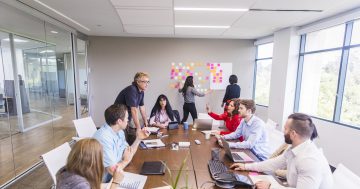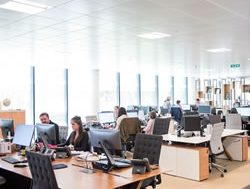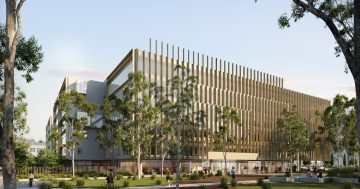Radeesh Shetty* lists some simple examples of workplace design that can boost employee performance and reduce stress.
 Designing a workplace with the employees’ health in mind should be the priority of all businesses.
Designing a workplace with the employees’ health in mind should be the priority of all businesses.
After all, it’s the employees’ skills and efforts that help a business thrive.
If employees are unwell, stressed and disengaged, it can disrupt the normal operations and incur additional costs to the organisation.
On the other hand, a congenial workplace environment provides numerous benefits from health care cost savings to increased productivity and engagement among the workforce.
There are several ways that businesses can ensure their workplace design is conducive to the results they are working for.
Here are my top five design suggestions:
Unconventional desk space, ergonomic seating and open layout
Providing open workstations rather than cabins encourages more interaction and stimulates open exchange of ideas.
Also, as the workforce comprises of people from different backgrounds, age groups and skillsets, the workplace designs should be made flexible to cater to their needs.
Having ergonomic furniture in office is an investment that’s worth the cost in terms of employee physical and mental wellbeing.
It’s also important to enable employees to move around in the office by creating different work spaces.
For instance, providing standing workstations or a set of couches for a relaxed work or even a small conference room to take interrupted calls creates a cordial work environment.
Open work spaces can also lead to noise distractions, which can be controlled by using sound-absorbing elements such as carpet and soft, fibrous materials.
Nurture a green culture
There are several ways to bring nature inside the office.
You can create a green corner, install living walls, or place air-purifying indoor plants near workstations and windows.
These not only improve the air quality in the workplace, but also have a calming and beneficial psychological effect on the workforce.
Conducting workshops on green culture is another way to engage with the staff on this subject.
Balance natural and artificial lighting
Lighting at work can have significant effects on cognitive function and productivity.
Too bright or dull lighting can cause headaches, eye strain and tiredness that can lead to stress build-up.
Too much lighting can also generate heat and alter the temperature in the office.
Ensure there’s ample natural light from windows, which also gives the employees a chance to look at the outside world.
A mere five seconds stare through the window can have a refreshing effect.
Proper ambient light is required in other parts of the workplace that don’t receive sufficient natural light.
This will help boost the mood and environment of that space.
Provide recreational space
A fun breakout room, gym or yoga room, cafe or a relaxed seating space will help employees relieve stress and rejuvenate.
These spaces encourage team bonding and informal exchanges of ideas.
Also a change in place can give a different perspective to solving problems.
Use of motivational imagery in this space can further boost the ambience and spur creativity.
Choose the right colours
There’s more to colour than meets the eye.
Research in neuroscience and psychology has shown that colours can impact our brain functions, and affect our mood and behaviour.
Colours and their intensities can stimulate a response or perception in our minds.
For instance, blue colour can have a calming effect and promote communication, while yellow has an energising effect and green is considered a mood-enhancing colour and effective stress buster.
Avoid using a single colour or a combination of several colours, instead stick to a couple of accents or colour palettes.
It’s wise to choose colours that match the purpose of the space.
For example, using relaxed and tranquil colours in a meeting room would not be conducive to the creative and dynamic environment that’s required.
Investing in the right workplace design will have a lasting effect on your workforce and bear long-term results for your organisation.
*Radeesh Shetty is an expert in office interior design. Based in Bengaluru, India, He began his journey by founding a company, Purple Turtles, after a shopping trip opened his eyes to a lack of affordable, yet good quality lighting solutions.
This article first appeared on the People Matters website.











